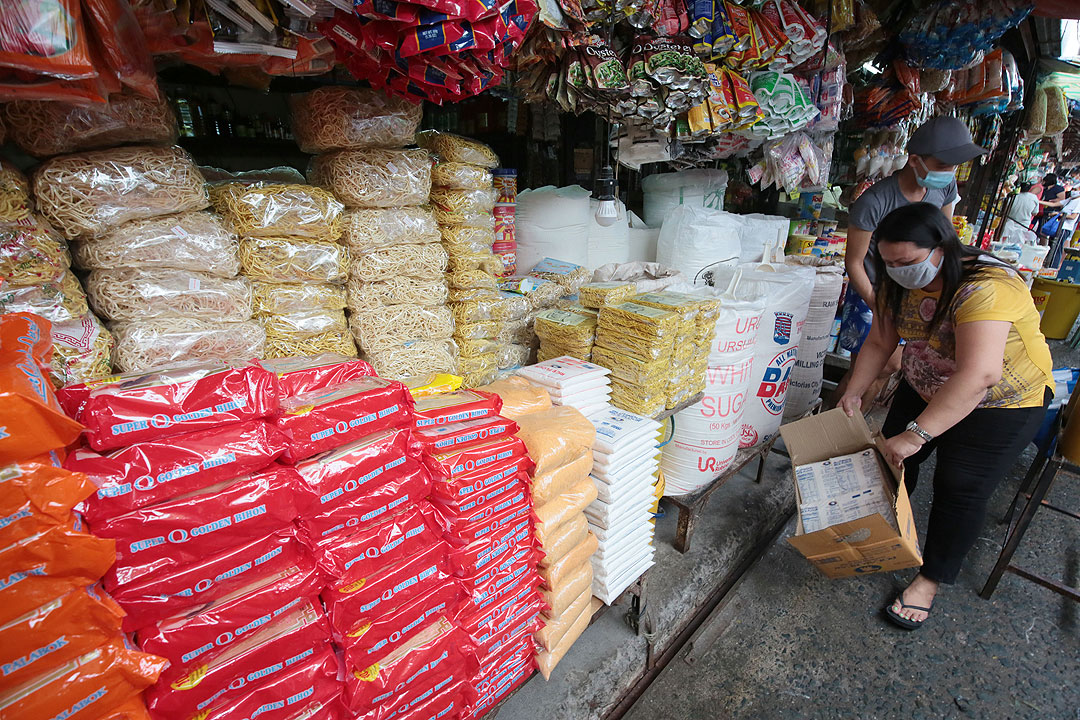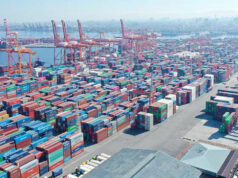
WHOLESALE price growth of general goods accelerated to 4.5% in July from 4% in June, driven by the food, animal and vegetable oils, and manufactured goods segments, the Philippine Statistics Authority (PSA) reported on Wednesday.
The July reading of the general wholesale price index (GWPI) remained weaker than the year-earlier 8%, the PSA said, citing preliminary data.
The recent high for the indicator was 5% in May.
In the first seven months, the GWPI averaged 5.2%, down from 7.3% a year earlier.
“This could reflect the recent tightness in global supply for food items and energy,” ING Bank N.V. Manila Senior Economist Nicholas Antonio T. Mapa said in an e-mail.
Among the eight commodity groups monitored by the PSA, four posted accelerated growth. Food prices rose 8.8% in July against 8.5% in June. Also posting higher growth were chemicals including animal and vegetable oils and fats (0.5% from -0.6%); manufactured goods classified chiefly by materials (5.2% from 5.1%); and miscellaneous manufactured articles (5.2% from 5.1%).
Price growth in beverages and tobacco eased to 7.5% from 7.6% while machinery and transport equipment prices growth was steady at 1.6% in July.
Price growth in crude materials, inedible except fuels, was -13.6% in July, against -23.5% the previous month, while price growth in mineral fuels, lubricants and related materials was -18.3%, against -20.5% a month earlier.
Price growth in Luzon exceeded the national average at 4.6% in July, from 4.1% a month earlier and 8.2% a year earlier.
The GWPI in Mindanao rose 4.3% in July, from 3.4% in June and 5.1% in the same period in 2022.
Growth in wholesale price in Visayas was 3.9% in July, compared to 3.5% the preceding month and 6.4% a year earlier.
China Banking Corp. Chief Economist Domini S. Velasquez said wholesale prices were bound to accelerate based on signals given off by the Purchasing Managers Index (PMI).
“In the August PMI report, manufacturers faced higher input costs, especially for fuel and raw materials. They may eventually pass this cost burden to customers through higher output prices. We may see prices of inputs remain elevated given upside pressures,” Ms. Velasquez said in a Viber message.
In the August S&P Global Philippines PMI contracted to 49.7 from 51.9 in July. The PMI is based on a scale of 50, with readings below that level indicating that the manufacturing is headed for a slowdown.
The PMI is a leading indicator for future manufacturing activity, being a measure of raw material volumes, which companies expect to process and put on the market in the coming months. High input prices can serve to dampen purchasing activity.
The August reading was the first in two years that the PMI came in below 50.
“Recent typhoons and expected rains will likely push up the cost of agricultural commodities. Oil prices could continue to rise given tighter global supply. Lastly, the prevailing weakness of the peso will make imports of raw materials more expensive,” Mr. Velasquez added.
In turn, wholesale price growth feeds into consumer price growth, signaling the future direction of headline inflation.
The PSA reported headline inflation in August of 5.3% against 4.7% in July and 6.3% in the same period last year driven by rising prices of rice, vegetables and fuel.
The August inflation reading also marked the 17th straight month of inflation exceeding the Bangko Sentral ng Pilipinas’ 2-4% target range.
“Given current developments, we could see GWPI leading the acceleration in CPI as price increases for GWPI tend to move ahead of CPI,” Mr. Mapa said. — Mariedel Irish U. Catilogo




